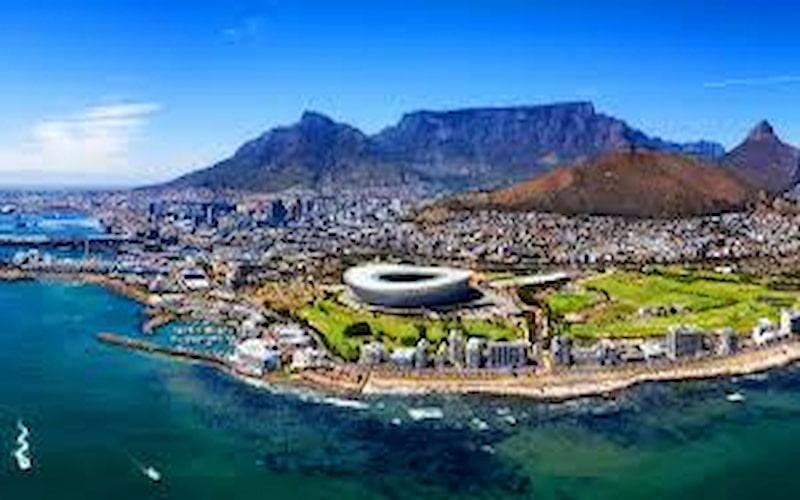South Africa is a country rich in history and cultural heritage, offering a diverse range of must-see historical landmarks that tell the story of its complex past. From ancient archaeological sites to symbols of the struggle for freedom, these landmarks provide insight into the events and people that have shaped the nation. Visiting these sites allows travelers to explore South Africa’s journey through time, from the early days of human evolution to the more recent struggles against apartheid. Each landmark holds a unique significance, offering lessons in resilience, transformation, and the enduring spirit of the people. Whether you’re interested in the origins of humanity, colonial history, or the fight for equality, South Africa’s historical landmarks offer a profound and educational experience that enriches any visit to this beautiful and multifaceted country.

Here are some must-see historical landmarks in South Africa.
1. Robben Island, a symbol of struggle and freedom:

Robben Island, off the coast of Cape Town, is one of South Africa’s most important historical sites. During the apartheid era, it was used to imprison political activists such as Nelson Mandela. The island represents the struggle for freedom and equality in South Africa. It is now a UNESCO World Heritage Site and museum, with guided tours led by former prisoners who share their personal experiences. The island’s history and role in the anti-apartheid struggle make it a must-see destination for anyone interested in South Africa’s past.
2. The Cradle of Humanity: A View into Early Human History:
The Cradle of Humanity, near Johannesburg, is a UNESCO World Heritage Site and one of the world’s most significant archaeological sites. This area is home to a complex of limestone caves, including the well-known Sterkfontein Caves, which contain some of the oldest hominid fossils discovered. The Cradle of Humanity offers a unique perspective on humanity’s origins, with fossils dating back millions of years. Visitors can explore the Maropeng Visitor Centre, which features interactive exhibits on human evolution and the development of early cultures. This landmark is essential for anyone studying archaeology, anthropology, or the history of human development.
3. The Apartheid Museum: Reflections on a Dark Chapter:
The Apartheid Museum in Johannesburg provides an in-depth and emotional exploration of South Africa’s apartheid history. The museum, which opened in 2001, uses powerful exhibits, photographs, and personal testimonies to chronicle apartheid’s rise and fall. Visitors are taken on a journey through history, beginning with the implementation of racial segregation policies and ending with the triumph of democracy in 1994. The Apartheid Museum is a must-see for anyone interested in the impact apartheid had on South Africa’s social and political landscape.
4. The Voortrekker Monument Honors Past Pioneers:

The Voortrekker Monument, located in Pretoria. Is a massive granite structure dedicated to the Voortrekkers. Afrikaner pioneers who migrated inland during the nineteenth century in search of independence. The monument is an iconic symbol of Afrikaner heritage. Surrounded by a laager of wagons that represent the Voortrekkers’ defensive positions. Inside, visitors will find the historical Frieze, a 92-meter marble sculpture depicting the Voortrekkers’ journey and battles with indigenous peoples. The Voortrekker Monument provides an intriguing glimpse into the history. And struggles of South Africa’s early settlers. And is still a well-known landmark for those interested in the country’s colonial past.
5. The Castle of Good Hope, South Africa’s oldest colonial building:
The Castle of Good Hope, in Cape Town, is South Africa’s oldest surviving colonial building, dating from the 17th century. Initially, the Dutch East India Company built the castle, which served as a fort, administrative center, and residence for the Cape Colony’s governor. Furthermore, the castle’s pentagonal structure and well-preserved architecture offer a glimpse into the early years of European settlement in South Africa. Today, the Castle of Good Hope houses military and historical museums that display exhibits about the history of the Cape Colony as well as the castle’s role in South Africa’s colonial past. Consequently, its importance as a historical and cultural landmark makes it a must-see for historians.”
6. Isandlwana Battlefield: The Site of Epic Conflict:

The Battle of Isandlwana, which took place on January 22, 1879, between the British Empire and the Zulu Kingdom, was, indeed, one of the most significant battles in South African history.The Zulu forces won a stunning victory, which remains one of the British Army’s greatest defeats during the colonial era. The Isandlwana Battlefield, in KwaZulu-Natal, is now a national heritage site where, consequently, visitors can explore the landscape and learn about the battle’s history. Moreover, guided tours provide detailed accounts of the conflict’s strategies, key figures, and aftermath. Ultimately, visiting Isandlwana provides a powerful perspective on the Zulu resistance and, in addition, the larger history of South Africa’s colonial wars.
7. Union Buildings: The Seat of Government:

The Union Buildings in Pretoria are. In fact, the official seat of the South African government and, furthermore, home to the President’s offices. This grand structure, built in 1913. Is not only a symbol of the country’s political history but also represents progress toward democracy. Additionally, Sir Herbert Baker, a British architect. Designed the Union Buildings. Which combine Neoclassical. And Cape Dutch styles.The site is also well-known for hosting Nelson Mandela’s 1994 inauguration as South Africa’s first black president. The Union Buildings’ gardens. Which provide breathtaking views of Pretoria. Are not only open to the public. But also serve as a popular spot for visitors to unwind and reflect on the country’s history.
Conclusion
Exploring South Africa’s historical landmarks offers a deep and meaningful connection to the country’s rich and complex past. For instance, each site. From the poignant Robben Island to the ancient Cradle of Humanity. Provides invaluable insights into the events as well as the people that have shaped the nation. Visiting these landmarks not only enriches your understanding of South Africa’s history. But also highlights the resilience and diversity of its people. As you plan your journey to these iconic sites. Securing a South Africa visa is a crucial step in making your visit possible.. Whether you’re drawn to stories of struggle. And triumph, in addition to the fascinating origins of humankind. Moreover, South Africa’s historical landmarks are, without a doubt. A must-visit for anyone looking to truly understand the soul of this remarkable country.






More Stories
Christmas Markets in Europe You Can’t Miss
5 Charming Swiss Villages You Can’t Miss
Top 5 Things to do at Dubai Parks and Resorts